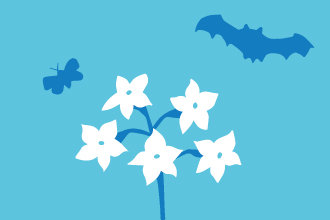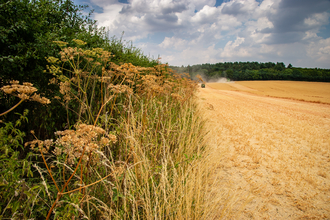
©Chris Lawrence
Large yellow underwing © Emma Lusby
Large yellow underwing
Found almost everywhere, the large yellow underwing is a night-flying moth that is often attracted to lights. It is brown with orangey-yellow hindwings.
Scientific name
Noctua pronubaWhen to see
June to OctoberSpecies information
Category
Statistics
Wingspan: 4.2-5.2cmConservation status
Common.
About
The large yellow underwing is a very common, large, brown moth, with orangey-yellow hindwings, bordered with black. It holds its wings folded back, flat along the body, and scuttles about on the floor, a bit like a mouse! Adults fly from June right through to October, and often come to lights at night. They rest during the day, but will flash their bright hindwings if disturbed to surprise and scare off predators. The caterpillars feed on a wide range of plants, including grasses and dock leaves, and hibernate over winter.How to identify
There are six similar species of yellow underwing moth in the UK which can be very difficult to tell apart. Most are smaller than the large yellow underwing; the similar-sized, broad-bordered yellow underwing, has a thick black border to its yellowy-orange hindwings and a higher contrast brown-and-grey pattern on the forewings.Distribution
Widespread.Did you know?
The large yellow underwing is a member of the Noctuidae family of moths; there are more than 400 Noctuids in the UK, making it our largest family of moths.How people can help
To attract butterflies and moths into your garden, plant nectar-rich borders for them to feed along and climbing Ivy and shrubs for overwintering insects. To find out more about encouraging wildlife into your garden, visit our Wild About Gardens website: a joint initiative with the RHS, there's plenty of facts and tips to get you started. To buy bird and animal food, feeders and homes, visit the Vine House Farm website - an award-winning wildlife-friendly farm which gives 5% of all its takings to The Wildlife Trusts.An illustration of a large yellow underwing

Corinne Welch

©Derek Moore
Plant a nectar cafe for pollinators
Set up a ‘nectar café’ by planting flowers for pollinating insects like bees and butterflies



